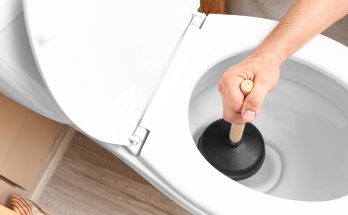Proper insulation is crucial for keeping your home comfortable and energy-efficient all year round. It acts as an insulating barrier between the inside and outside, preventing cooled or heated air from escaping. The right insulation helps lower utility bills by reducing how much your HVAC system needs to run. But with so many insulation materials available, how do you decide which type is best for your house? Well, here are a few key factors to consider:
Insulation Performance
The most important consideration is an insulation material’s thermal performance and insulating R-value rating. The higher the R-value, the better that type of insulation is at resisting heat flow and providing energy savings.
Different densities impact R-values. For instance, higher density insulation like rigid foam boards will have a higher R-value per inch compared to lighter, fluffier batt or loose-fill insulation types. Choose insulation that meets your region’s Department of Energy recommended R-value levels.
Application Type
Next, think about where in your home the insulation will be installed. Different application areas call for specific insulation forms and materials.
For open attic spaces, loose-fill cellulose or fiberglass blown-in insulation works well. Unfinished wood-framed walls use faced batts or rolls. Basements and crawl spaces may require rigid boards. Insulating ductwork calls for wraps. Moreover, according to the experts at Epsilyte, expanded polystyrene insulation makes for good moisture-resistant exterior foundation and under-slab insulation.
Climate Considerations
The climate and weather conditions where your home is located also influence the ideal insulation choice. Moisture exposure is a concern for chronically damp, humid climates where vapor-permeable insulation types might be preferable.
Extremely cold regions require the highest R-values to maximize thermal envelope efficiency. Hot, dry desert climates often use radiant barrier sheathing or coatings to reflect heat away from the home. Always verify an insulation material’s performance range and moisture resistance for your local environment.
Project Budget
Of course, project costs and upfront insulation pricing factors into the decision-making process, too. Fiberglass batt insulation ranks among the most affordable insulation materials, especially for DIY installation.
At the higher end, rigid foam board, spray foam and other professional-installed insulation types command premium pricing. But the higher upfront investment may pay back quicker in greater energy savings over time. For bigger budgets, consider higher R-value insulation to maximize long-term efficiency.
Special Performance Needs
Additional special performance benefits can sway which insulation material makes the most sense too. For instance, some insulation minimizes noise transfer between rooms or floors. Spray foam air-seals and insulates in one step. Certain types resist fire, mold, or pest damage.
Health and environmental safety concerns, like avoiding formaldehyde or recycling old insulation, may come into play as well. Weigh these types of auxiliary needs against an insulation’s core performance and cost.
Setup for Installing Insulation
Finally, look at the actual installation setup and process itself. DIY-friendly batt rolls suit homeowners comfortable tackling insulation projects themselves. Blown-in loose-fill or spray foam requires professional insulation contractors.
Attics with tight clearances might call for lower density loose-fill over rigid boards. And existing insulation that’s in good condition may only require an affordable topping up versus complete replacement.
Conclusion
With so many types of home insulation available, there’s an optimal solution for every part of the home and climate. Consider all the factors from R-value to pricing to find an insulation material that maximizes energy efficiency and year-round comfort. A well-insulated home is an investment that pays back daily in lower utility costs and prolonged HVAC equipment lifespan. It also enhances your home’s overall value and reduces environmental impact by minimizing energy waste. Take the time to evaluate your insulation needs carefully in order to make the best long-term decision.




